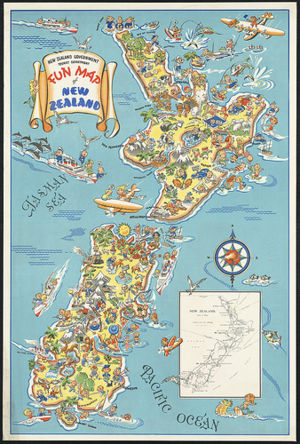Day in the life of a tourist/Activities/Knowledge of New Zealand
Objective
Unit Standard 18212 – V2, Level 3, Credit 8 - Demonstrate knowledge of New Zealand as a Tourism Destination
Element 1 - Identify and describe the geographical location of New Zealand and locate key destinations on a map PC 1.1, 1.2, 1.3, 1.4 - New Zealand is located on a map in relation to International Date Line and hemispheres. Three international airports, with three letter airport codes, are located on a map and their distance from the city centre noted. Key geographical features of New Zealand are located on a map
Element 5 - Provide travel information for visitors to New Zealand.
PC 5.1, 5.2, 5.3, 5.4 - New Zealand standard time/daylight saving time, entry requirements and climatic conditions are described. Current information on health and safety precautions, tipping and taxes, and currency are provided.
Unit Standard 18226 - V2, Level 3, Credit 3 - Element 2 - Demonstrate knowledge of cultural shock
PC 2.1, 2.2 - Culture shock is described in terms of differences between tourists' expectations and their experiences in a foreign country and the impact of culture shock in terms of their experiences.
Assessment Activity
Provide information for visitors to New Zealand
Due date: Monday 09 March 4.00pm
Map work:
Cities, towns to be highlighted Rivers must have the complete length highlighted Lakes and National Parks to have the total area highlighted.
Your work is to be presented collated and two staples on the side. The Maps are to be attached by a paper clip. Please make sure you have your name on the Maps.
Task
Provide an information sheet/booklet for the delegates who will be attending the wine conference. You must include the following:
1. On a map of the world, highlight New Zealand, the International Date Line and the Northern and Southern hemispheres.
2. On a map of New Zealand, highlight three international airports and advise their three letter airport code and distance to the city centre. Please also highlight the following geographical features; Mt Aoraki, Fiordland National Park, Lake Wakatipu, Waikato River, Mt Ruapehu, Lake Taupo.
3. Provide information on the difference between New Zealand standard time and daylight saving time in relation to:
a] GMT
b] London
c] Sydney
d] New Delhi
4. Your conference delegates are nationals of the United Kingdom, India and Australia and have requested the current New Zealand entry requirements for visitors.
5. Please include information on New Zealand currency (including current exchange rate), tipping and taxes, and any health and safety precautions (e.g. drinking water) necessary for their stay in New Zealand. Provide at least two pieces of information for each item.
6. The delegates have requested information on the climatic conditions in New Zealand during their stay. They will be travelling to Napier for the conference and will travel to Queenstown and Dunedin and then on to the Bay of Islands for a summer holiday. They are planning to return for a skiing holiday with their family in June. Describe the weather conditions they will encounter at Mt Ruapehu, Rotorua, Christchurch and Wanaka.
7. Describe the differences that Mr and Mrs Stewart may experience in New Zealand in terms of food and beverages, hygiene standards/practices, level of service and service delivery compared with their own culture (Indian).
8. Describe the impact (culture shock) the difference in cultures may have on their overall experience of visiting New Zealand. e.g. different laws
